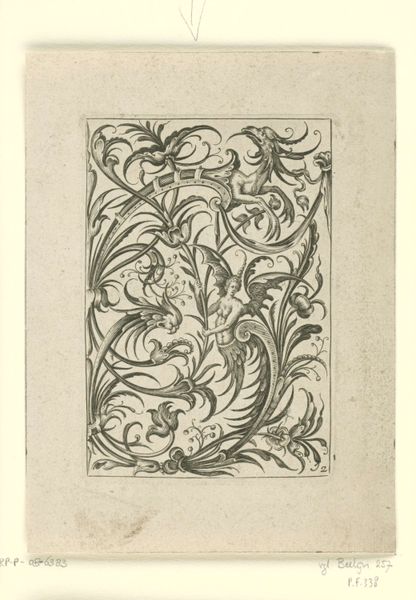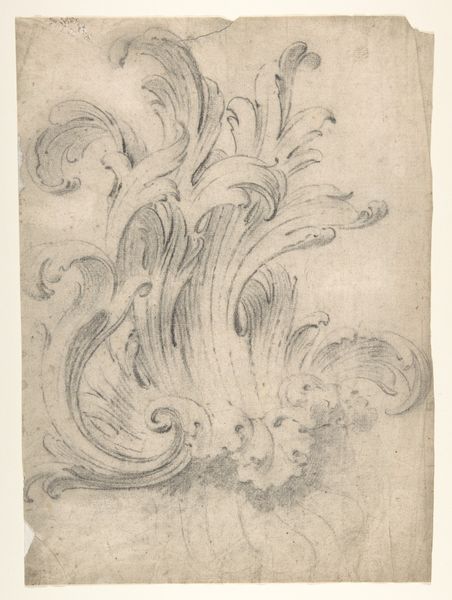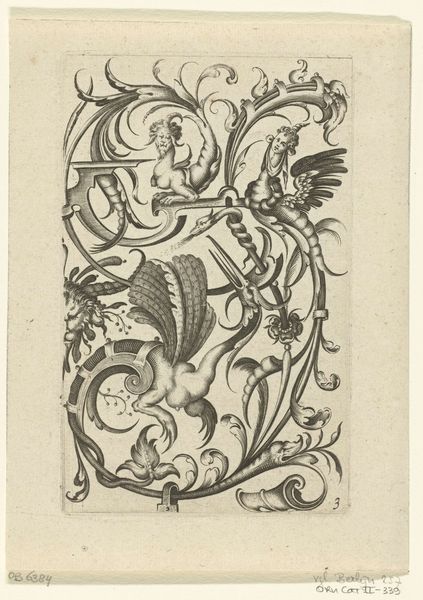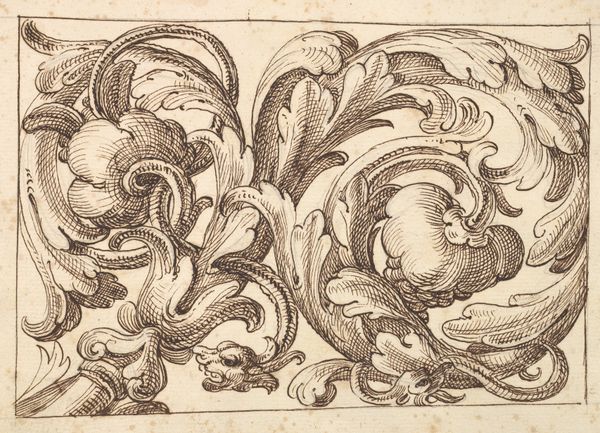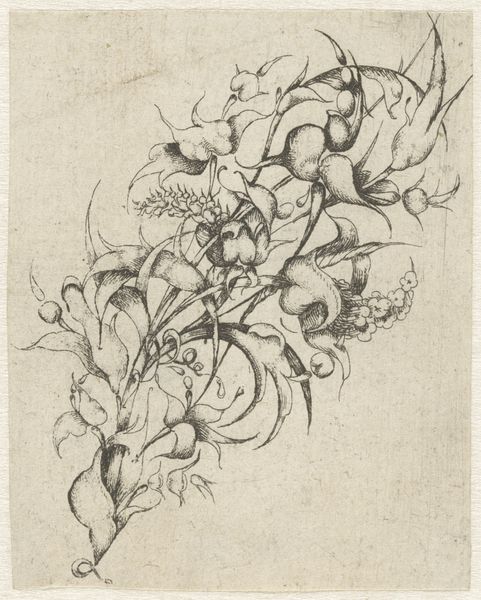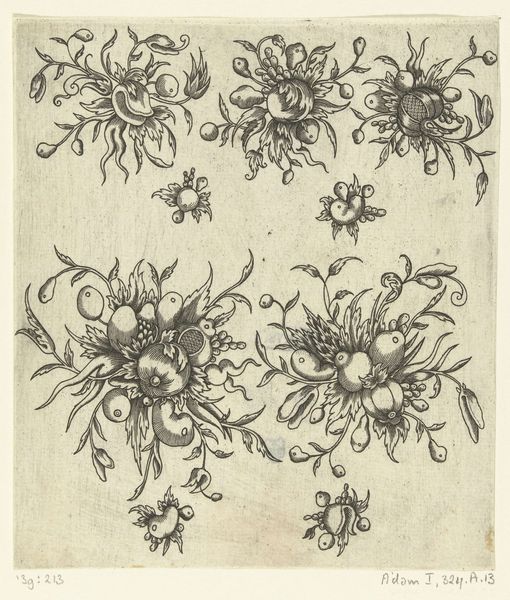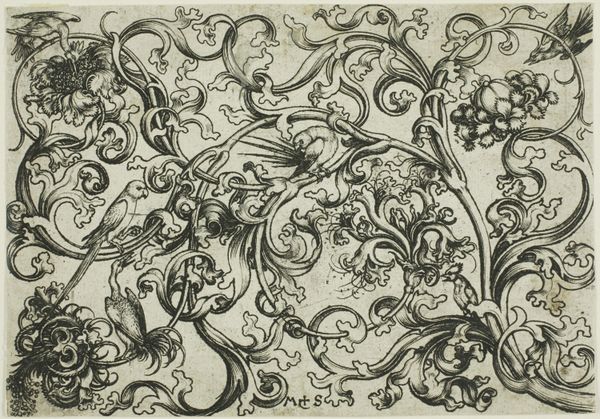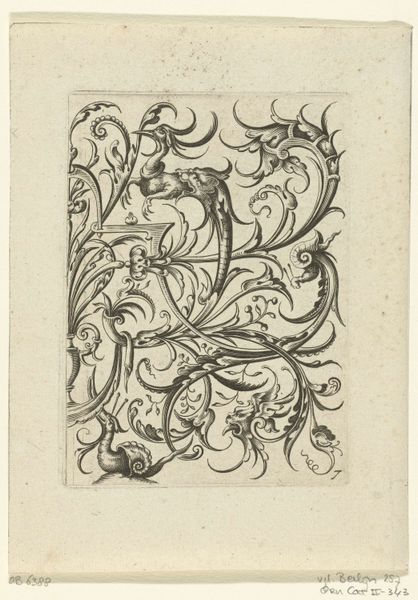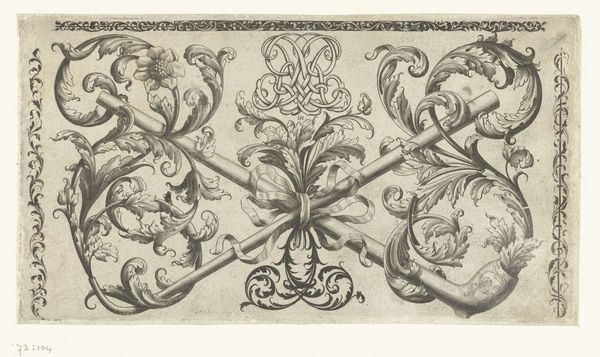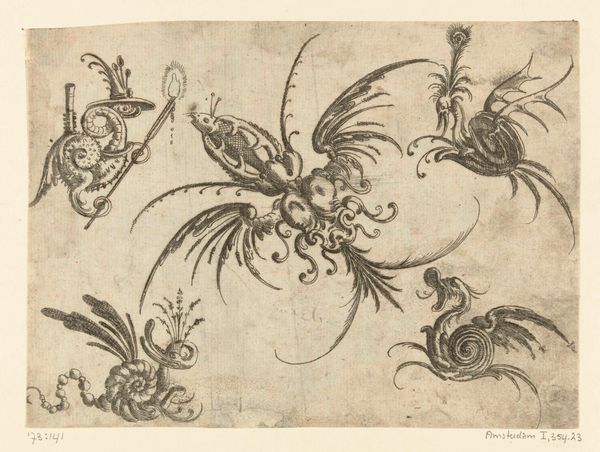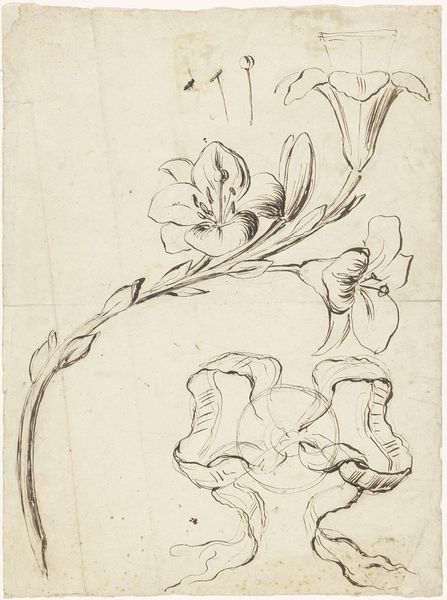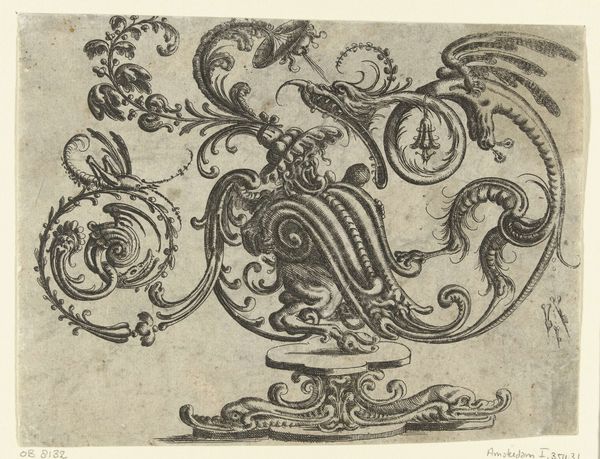
#
light pencil work
#
pen drawing
#
pen sketch
#
old engraving style
#
personal sketchbook
#
plant
#
pen-ink sketch
#
pen work
#
sketchbook drawing
#
sketchbook art
#
doodle art
Dimensions: height 125 mm, width 166 mm
Copyright: Rijks Museum: Open Domain
Editor: This is *Distelornament*, a pen and ink drawing made between 1465 and 1485 by Meester W met de Sleutel. It's quite intricate, and seems to only feature one central motif—a thistle. What strikes me is the artist’s hand. How do you see this work? Curator: It's precisely that emphasis on the artist's hand and the labor involved in its production that intrigues me. The density of the lines suggests a deliberate, time-consuming process. Think about the cost of the materials themselves in that period, the specialized knowledge required to prepare the ink and parchment, not to mention the skill needed for such precise rendering. What does the meticulous detail suggest to you? Editor: I guess it wasn’t just some quick doodle. Was this artist particularly celebrated, or were these sketches made in preparation for larger, commissioned works, maybe metal work designs? Curator: Exactly! The designation “Meester W met de Sleutel” implies a known, recognized artisan. It raises questions about the value placed on drawings at this time. Were they considered commodities, traded within artisan circles, or held as personal intellectual property? Did the rise of printmaking techniques, still nascent in the 15th century, affect how these designs were disseminated and consumed? Think of it: an artist no longer creating singular works for wealthy patrons, but providing accessible designs for wider replication. Editor: It makes me reconsider “craft” versus “high art.” So, viewing it through a materialist lens emphasizes how its creation was both a technical process and a culturally situated practice. Curator: Precisely. By foregrounding the material conditions and the means of production, we can move beyond aesthetic appreciation and delve into the social and economic forces that shaped the artwork. What new insights about similar works will you seek? Editor: I’ll be focusing on the production process; examining the intersection of labor, materials, and social context… thanks to your insights!
Comments
No comments
Be the first to comment and join the conversation on the ultimate creative platform.

